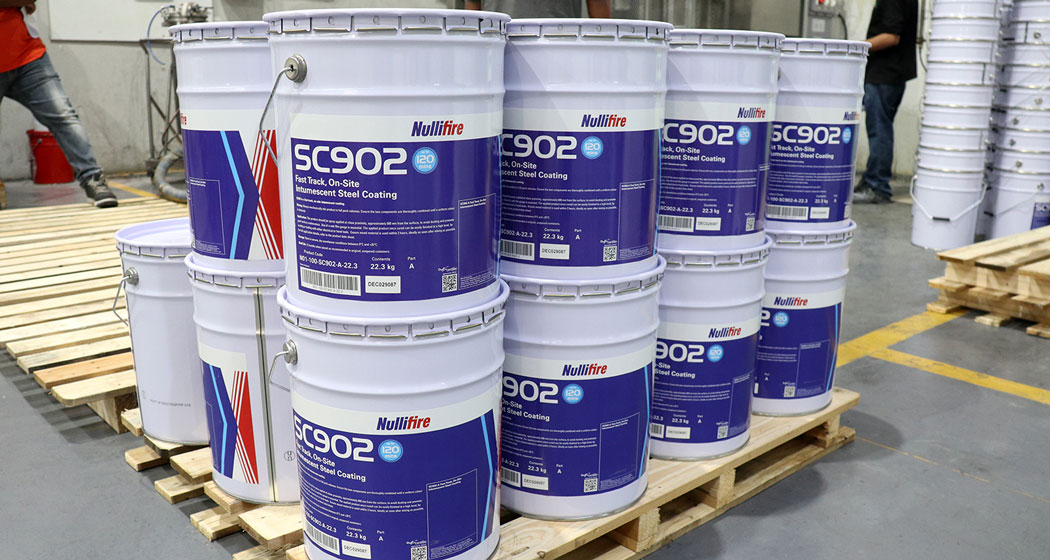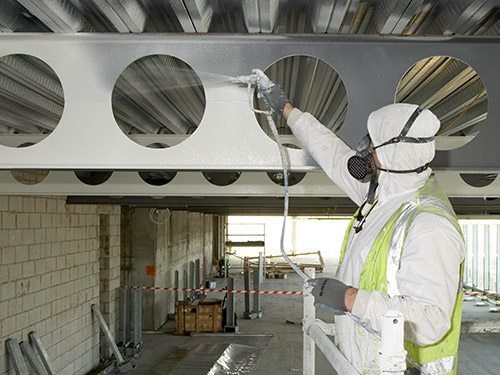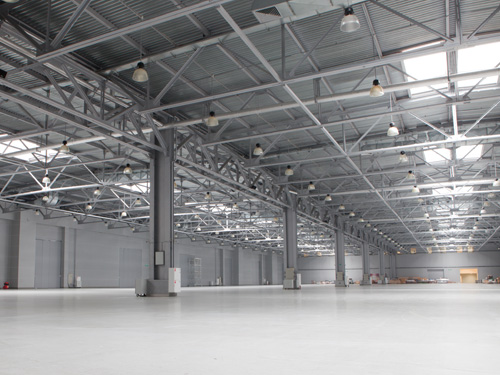There are a couple of ways to fireproof a building for safety measures against the event of fires. Typically, they are classified as active fire protection and passive fire protection. While active fire protection requires a trigger (action) or an alert for it to function (i.e., a sprinkler system), passive fire protection is often classified as coating or cladding arrangements, or free-standing systems which, in the event of a fire, will provide thermal protection to restrict the rate at which heat is transmitted to the object or area being protected.
For this article, we will focus on one type of passive fire protection called intumescent coatings and examine the pros and cons of the different types of intumescent coatings to help you make an informed decision when employing the best option for your next construction project.
What is intumescent paint?
 Intumescent paints are considered the lightest form of passive fire protection. An intumescent is a coating that, when exposed to heat, is rapidly transformed through sublimation, and expands many times its original thickness (up to 100 times), to form a stable, carbonaceous char.
Intumescent paints are considered the lightest form of passive fire protection. An intumescent is a coating that, when exposed to heat, is rapidly transformed through sublimation, and expands many times its original thickness (up to 100 times), to form a stable, carbonaceous char.
The resultant char reduces the conduction of heat from the fire to the substrate, delaying the time it takes to reach structural failure. This carbonaceous char must have the ability to remain in situ during any movement of the steel, such as expansion or deflection, until the required protection criteria is achieved.
Intumescent paints are typically applied using airless spray paint equipment for speed and quality of finish, whilst some brands might require large plural spray equipment, although brush and roller applications may also be used. Depending on the project specification, usually up to 120 minutes, the vast majority of the intumescent materials in the market would need several coatings to be applied in order to reach the required dry film thickness to protect the structure from failure.
Common types of intumescents
1. Water-based Intumescent
Water-based intumescent coatings are a generally more eco-friendly, and less-chemically smelling option. They are the least expensive and produce less odour, however, these coatings are less tolerant to humidity and low temperatures and therefore may take longer to completely cure in such environments.
2. Solvent-based Intumescent
Solvent-based coatings usually used in semi-exposed environments and are tested against weather and temperature variations. Solvent-based coatings tend to be more resistant to weather conditions as well as temperature changes and humidity. They also dry faster and have a smoother finish.
3. Epoxy-based Intumescent
Epoxy-based intumescent is typically used in harsher environments such as the offshore marine industries or the chemical industry because these coatings provide excellent hydrocarbon fire protection. Epoxy-based intumescent comes in two-parts which when combined, forms a very thick and durable film that insulates the steel member and is highly resistant to corrosion.


 Fire Protection
Understanding Firestopping and Fire Protection
Fire Protection
Understanding Firestopping and Fire Protection
 Concrete, Fire Protection, Flooring, Sealants, Glazing and Façades, Waterproofing and Roofing, Infrastructure
Your Essential Guide To Protecting All Parts Of A Building Envelope
Concrete, Fire Protection, Flooring, Sealants, Glazing and Façades, Waterproofing and Roofing, Infrastructure
Your Essential Guide To Protecting All Parts Of A Building Envelope
 Fire Protection
Intumescent Paints: On-site vs Off-site Applications
Fire Protection
Intumescent Paints: On-site vs Off-site Applications
